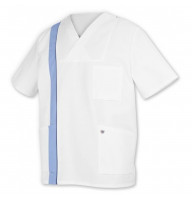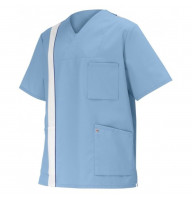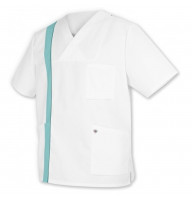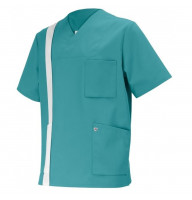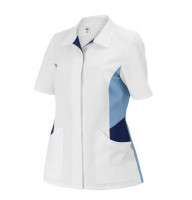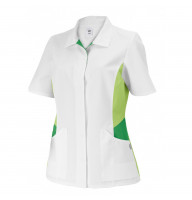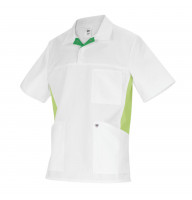0.00€
CheckoutProfessional Clothing for Medical Workers: Tunics, Trousers, Lab Coats — Application and Features
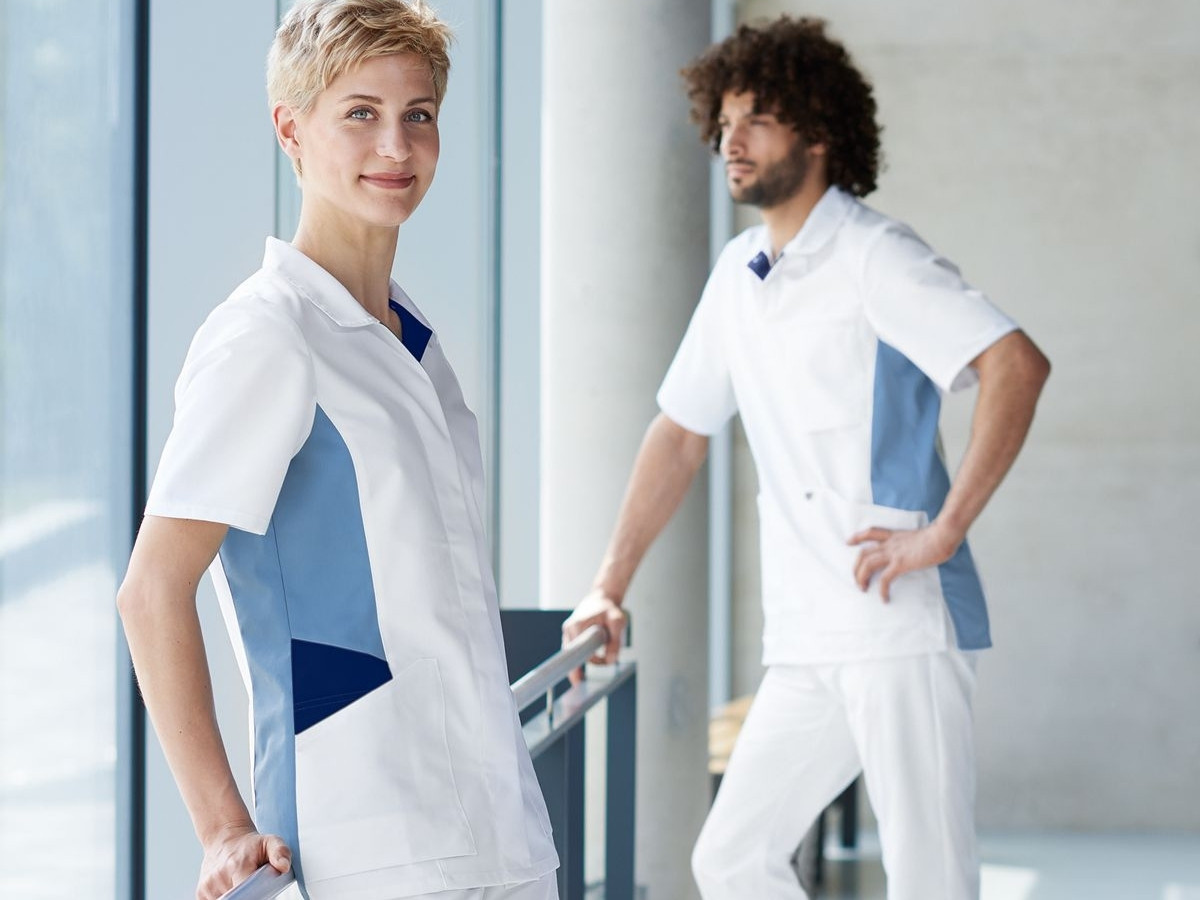
Medical clothing is more than just a uniform — it is a key element of the professional activity of doctors, nurses, lab technicians, dentists, and other healthcare professionals. It ensures comfort, hygiene, safety, and builds trust with patients.
Main Requirements for Medical Clothing:
-
Hygiene – materials must be easy to wash and disinfect.
-
Comfort – clothing should not restrict movement; fabric quality and a comfortable fit are crucial.
-
Protection – fabric must be resistant to dirt, antibacterial, and suitable for sterilization.
-
Professional Appearance – stylish and neat medical clothing highlights the professional status and builds patient trust.
Let’s take a closer look at the features and advantages of the key elements in a professional medical wardrobe: tunics, trousers, and lab coats.
Medical Tunics: Comfort and Professional Style
Design and Fit Features
Medical tunics come in women’s, men’s, and unisex styles. Women's models usually feature a fitted cut, elegant fastenings, and decorative elements. Men’s tunics tend to have a straight silhouette, clean lines, and practical design.
Types of Medical Tunics:
-
Classic – straight or semi-fitted cut in basic colors (white, light blue, navy).
-
With Inserts – models with contrasting details, colored panels on the collar, sleeves, or pockets.
-
With Elastic Elements – tunics with knit inserts or stretch fabrics for added comfort.
Tunics for Different Medical Fields:
-
Clinical Medicine – doctors, nurses, and paramedics prefer comfortable and durable models.
-
Palliative Care – soft fabrics and pleasant appearance help create a trusting atmosphere.
-
Veterinary Medicine – clothing must be dirt-resistant with a loose fit for active movement.
Trousers for Medical Workers: Practicality and Freedom of Movement
Key Requirements for Medical Trousers:
✔ Ergonomic cut – allows free movement without restriction.
✔ Breathable materials – natural or blended fabrics that allow air circulation.
✔ Durability – high-quality trousers retain shape and color even after dozens of washes.
Model Differences:
-
Doctor’s Trousers – typically straight-cut with pockets for tools.
-
Nurses’ Trousers – comfortable, elastic, often with an adjustable waistband (elastic or drawstring).
-
Men’s vs. Women’s – women’s models tend to be more fitted, while men’s are straight or slightly tapered.
Medical Lab Coats: The Classic of Professional Attire
Who Wears Medical Lab Coats?
-
Doctors – the white lab coat is a symbol of the profession and status.
-
Lab Technicians – protects from chemicals and biological materials.
-
Pharmacists – helps maintain cleanliness and a professional appearance.
Design and Material Features:
Medical lab coats can be short or long, with buttons, zippers, or snaps. It’s important to choose fabrics that are hypoallergenic, antibacterial, and easy to clean.
The Role of the Lab Coat in a Professional Look:
Beyond protection, a lab coat conveys trust and professionalism. Modern designs increasingly combine functionality with elegant style.
Fields of Application for Medical Clothing
Medical uniforms are used in institutions such as:
-
Public and Private Hospitals – worn by all staff from doctors to technicians.
-
Dental Clinics – colored and pastel-toned uniforms are especially popular.
-
Veterinary Clinics – clothing should be comfortable and protective against scratches and dirt.
-
Mobile Medical Units – uniforms must be lightweight, functional, and equipped with pockets for tools.
How to Choose the Ideal Medical Clothing?
Key Selection Criteria:
-
Size – choose models that fit well but don’t restrict movement.
-
Fabric – the best choice is a blend of natural cotton with synthetic fibers for durability.
-
Style – select cuts that match the specifics of your work.
Current Trends in Medical Apparel:
-
Color Options – beyond classic white, popular shades include light blue, turquoise, gray, and soft pink.
-
Modern Silhouettes – often resemble casual wear, highlighting the figure.
-
Innovative Fabrics – antibacterial, water-repellent, with a cooling effect.
High-quality medical clothing is not only a professional requirement but also a source of comfort and prestige. Choosing the right fit, fabric, and size helps you work with maximum efficiency and satisfaction.
You can find the ideal medical clothing in our online store, offering tunics, trousers, and lab coats for doctors, nurses, veterinarians, and pharmacists.
Choose comfort and quality — work with ease and confidence!


